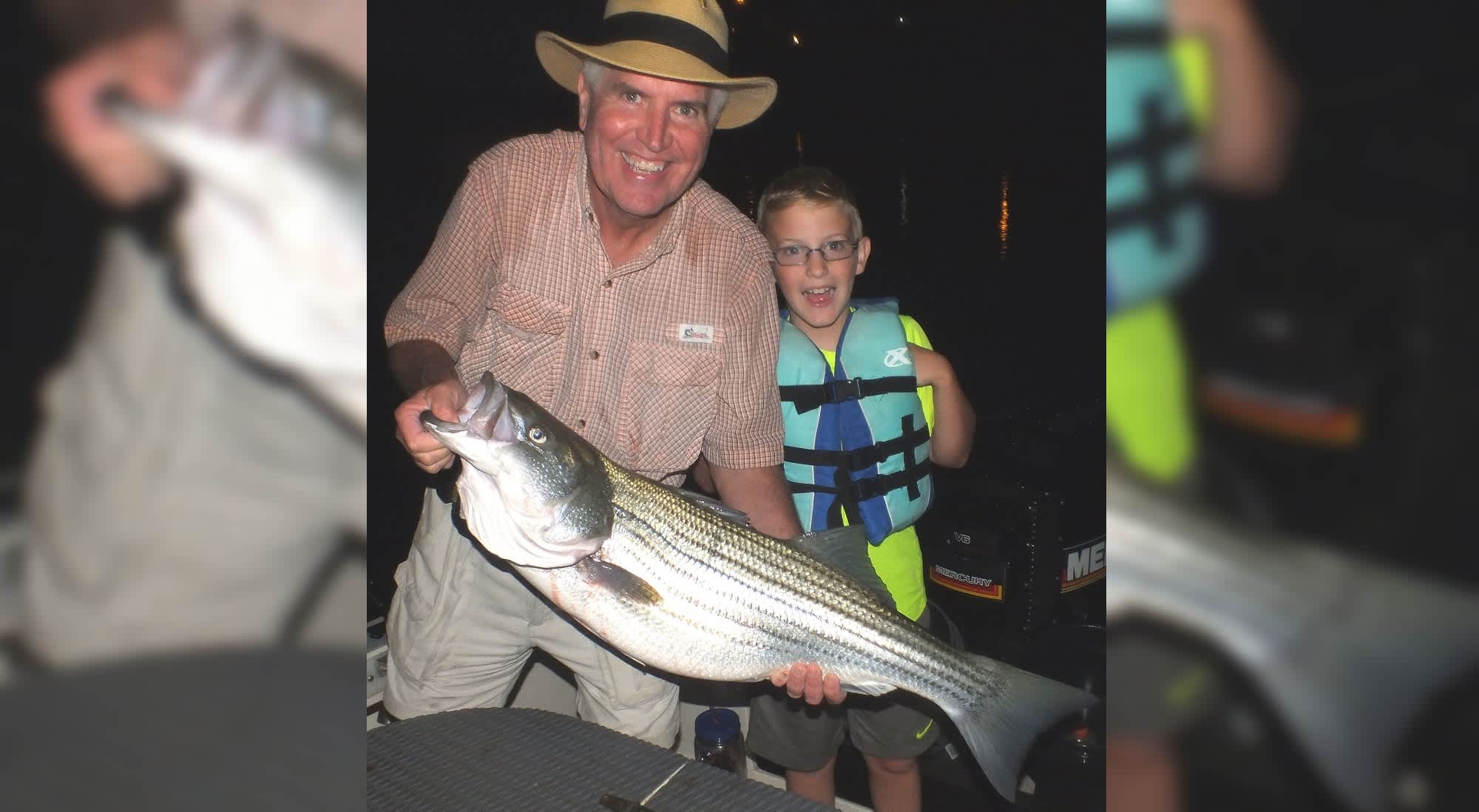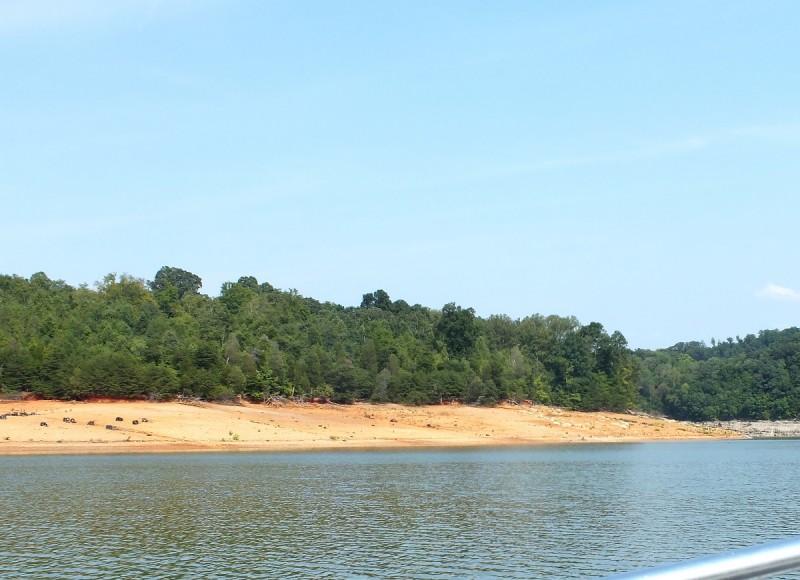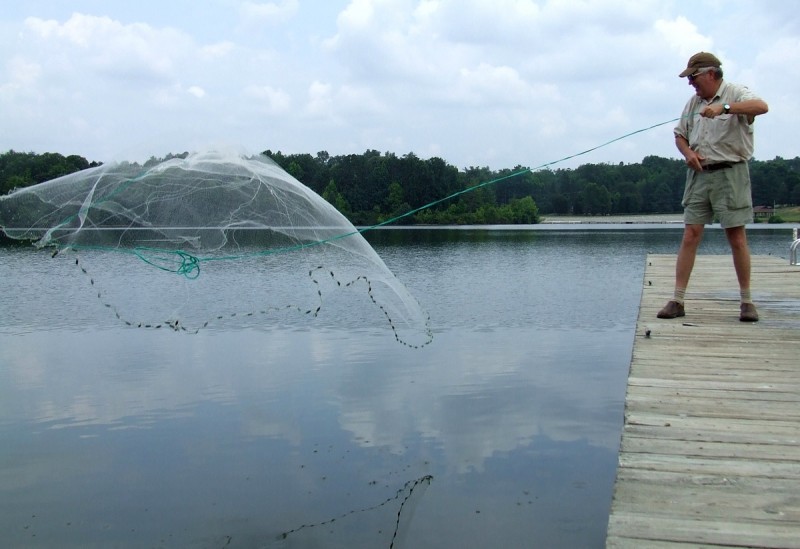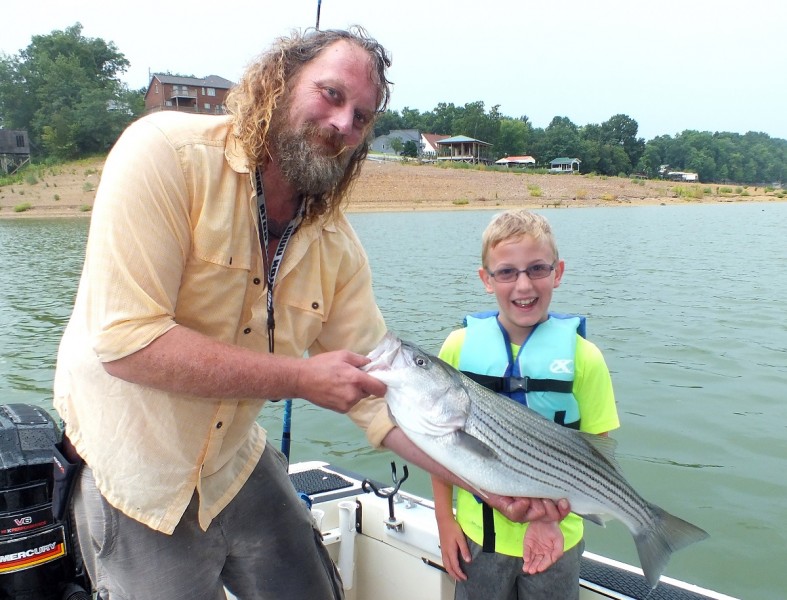Tennessee’s Boone Lake Remains a Strong Fishery Despite Drawdown
Lewis Creek Shooting School 08.25.15

One of America’s premier game fish is the striped bass. They’re one of the most versatile angling targets. Stripers can be pursued using almost any imaginable sportfishing technique, from bait fishing and fly fishing to trolling. Stripers can thrive in Southern inland lakes or as ocean fish, and they prevalent on both the Atlantic and Pacific coasts. They’re tough fighters, they grow to monstrous size at a rapid rate, and they’re wonderful table fare.
Of all the locations where I’ve caught stripers, probably the most unlikely-looking location is Boone Lake near Kingsport, Tennessee. In March of this year, the Tennessee Valley Authority discovered a well-developed, complex network of groundwater seepage paths coming from sources other than the reservoir. During large rain events, surface runoff flows underneath the dam and is a leading contributor to the observed seepage and sinkhole at the toe of the dam.
This represents a threat to the dam and if not corrected would ultimately lead to a possible catastrophic failure. As a result, Boone Lake has been drained down to over 10 feet below the lowest winter level. This has created an unusual situation, with marinas now located on high ground far above the lake with desert-like areas between a much-reduced lake. Fifty yards from the nearest water, watercraft hang unused in million-dollar homes’ boat houses.
There have been similar seepage issues in Kentucky and Tennessee, such as Wolf Creek Dam and Center Hill Dam—all areas with lots of limestone where caves and caverns abound. It’s expected the time required to return the reservoir to normal operations will likely be five to seven years. Work on the composite seepage barrier will begin in early 2016. Boat ramp extensions along with roads and parking areas are planned to allow access to the lake during this time.

The remarkable thing about the situation Boone Lake finds itself in now is that the striped bass population is still thriving. Captain Rod Salyers is still providing great fishing in spite of these radical changes. I wrote a story on Boone Lake a few years ago and when Rod reported he was still catching big stripers on every trip, I had to check it out.
Riding up the lake was a strange experience, with lake bottom exposed that hadn’t been seen since the lake was filled in the early 1950s. Just seeing the rock formations that once were submerged was interesting enough, but the most striking thing was seeing the hundreds of lake homes that are now separated from the water by what looks like desert. Private boat ramps, floating docks, boat houses and even stranded boats lined the previous shoreline far above us as we ran up the lake.
Rod Salyers has been fishing Boone Lake since he was 19 years old. As striped bass are adaptable, so is Rod. He’s been patterning the fish since the initial drawdown and has found a pattern that reliably puts him on fish, and he’s at the beginning of his big fish season, in which four-foot stripers are not at all unusual.

We began the trip by cast netting large gizzard shad. Our target-sized fish was around 10 inches, though six-inch baits can produce. After putting baits in the tank, we ran up the lake (now more of a river) to the confluence of the cold-water release from South Holston Lake five and a half hours upstream. Intercepting his cold water is the key to Rod’s pattern, since the arrival of the cold water forces the bait into a higher-than-normal density and the big stripers arrive and feed in a target-rich environment. The result is a perfect combo of water-clarity change, temperature change, and bait-rich water—the results can be spectacular.
We slow-trolled the baits along the vertical thermocline, where 56-degree cold water begins to mix with 80-degree lake water. The big gizzard shad rose to the top when pursued by predators and we had a couple of hookups that resembled top-water blowups. While there are hybrids in the lake, generally Rod only catches larger stripers using this method. From about 6 p.m. to 9 p.m., we caught six stripers and a hybrid, with our largest fish being a 38-inch lunker.
Ultimately, the face (or I should say bottom) of Boone Lake will change drastically as a result of the downtime involved in this repair. Vegetation will certainly cover the border of the lake in the next seven years, Homeowners and marinas will adapt to the change and eventually, the lake will refill. While this time of change and repair is going to be difficult, the angling opportunities there still abound.

Striped bass are adaptable. They live in warm and cold water, transition from fresh to salt water, and thrive in upland lakes and vast oceans. Smart fishing guides like Captain Rod are just as resilient, and Rod has proven this by adapting to the changes and providing his clients with a great fishing excursion by hard work and experience. I have no doubt that once Lake Boone is at full pond, the structure that will be left afterwards will prove beneficial to the fish population, making it as great a fishing location as it was before this happened.

